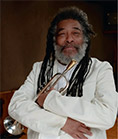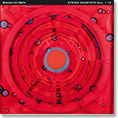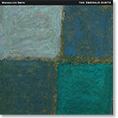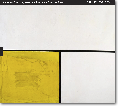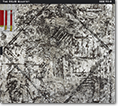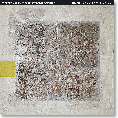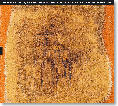THE MUSIC

THELONIOUS MONK - A REFLECTION
Most people would never realize that I am closer to Thelonious Monk than to any other artist.
What connects us is a vision of composition and its forms, music psychology, and our articulation of the ensemble as a trashing field for new information.
With an illustration of silence, not as a moment of absence, or a space for resting, but as a vital field where musical ideas exist as a result of what was played before and afterward. Silence.
New Haven, Connecticut, July 10, 2017
Wadada Leo Smith
MONK - THELONIOUS MONK (1917-82)
Monk.
The Thelonious.
Composer-performer.
A pure creative visionary
An inspiration that arcs straight across the structured invisible world.
From the Kilimanjaro plains to the dancing banks of the Mississippi river basin.
His talented descendants set along the sloping light-fields as he instructed with the piano, And what he played, with his hands no more than 3 millimeters just beneath the surface, Etched in sonic waves, the concepts we comprehended.
Logic and bold strategies illuminated his message; and with each tone that he cast forth Changed the way the water appeared, its color, depth, activity, and the velocity density;
Our knowledge rising from each equation that he chose to unveil.
Monk.
The Thelonious.
Every day, I sit on your doorstep
Hearing the mystery of creative music unfold.
Now, I rise higher.
In this life
I am closer to you than to any other artist.
Not in the way you inform your music practice and ensemble intelligence.
Maybe that too.
But how we calculate inspiration.
New Haven, Connecticut, July 10, 2017
Wadada Leo Smith
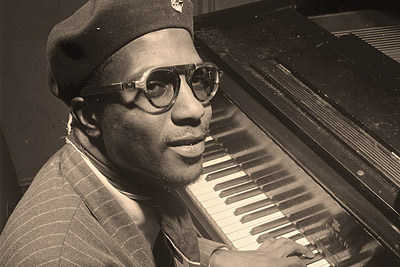
THELONIOUS MONK - A PERSONAL HISTORY
In the 1950s, I began to think of myself as a composer after getting my first trumpet and writing my first piece at the age of 12. I started buying records by Bird, Dizzy, Monk and others, and out of everything I heard, it was Monk, his ideas of a band and composition, that were the closest to what I dreamed of being as an artist. His history of composition and his knowledge of how to use sound were a prime motivator, really, for me wanting to be a composer. I would go back and forth between him and Duke Ellington on this, but Monk had the upper hand in the end. Perhaps I was influenced by hearing of Duke saying that, when listening to Monk, he thought of Monk as the young him.
From early on, I was aware of this idea that you have to choose between being a composer or a performer and felt that this was a false myth. I knew of people - Monk being one, Duke another and John Lewis a third - all these people, who were equally fluent in the language of composition and in creating music in performance and, from the outset, I wanted to be one of them. Not doing one or the other but doing both.
Monk´s ideas, the way he used sound, the way he sent out the sound, always impressed me. He does not use full two-hand chords - he finds the most relevant notes in those chords and uses those. And they are not harmonic progressions that he is throwing out to people. It is actually something much more profound - he is shaping the overall sound of his own playing or that of his band. He is altering the composition and the overall sound to fit the moment, constantly moving away from the piece and adding to it.
The essence of Monk is, I believe, in his solo performances. Even in live performances with his band, he always played unaccompanied solos. So what does that mean? To me, that means that Monk now has a chance to be as fluent as he can be in his own musical language without any other distractions; he does not have to play with anybody - he plays with himself. All those pieces, the solo music, follow the primary formula of the compositions, but they all stray, they all lead to expansions and further explorations - allowing the compositions to grow and become renewed each time he plays them.
An album of Monk´s that I have been particularly fond of for a long time is Thelonious Alone In San Francisco, whichI bought in the 1960s while still in the military. Although it is a live recording, all of the performances included there are quite short. Monk turns his compositions into these little gems of beautiful piano music that could not be played on anything else but the piano in the way in which he played them.
About 25 years ago, I received a compilation of 81 transcriptions by Bill Dobbins of Monk´s solo performances. I´ve been playing music out of that book for my own satisfaction ever since. I did not play this music to prepare for a performance or to base a recording on it, I played it as a way of connecting with Monk´s ideas, knowing that if I spent 45 minutes or an hour playing over Monk´s compositions, then that would start to give me a very fluent idea about my own notes, about rhythm and melody. The way in which I play Monk´s melodies on this recording, they are all personal: they are not based on chord progressions, they evolve essentially by proportion - long notes, short notes. Each of them is played, they move, in a way in which I can celebrate his melody, but seen through my expression of it, showing the uniqueness of how I think about his music just as Monk showed his uniqueness every time he played.
Another reason why I feel a real affinity to Monk is that he was the only major jazz musician who was not, in his early years, working steadily. There are lots of myths and theories about why that was the case, but the fact that he was not doing a lot of performing gave him sufficient time to do his own research. People like Sonny Rollins, John Coltrane and Miles Davis would go over to his house and ask him to show them something - and he would. He would show them stuff on the piano that they would later transform to use inside of their own music. So, this seems very much like my own early New Haven years, after I came out here in 1970. I did not perform much at all until the last 20 years or so. I spent a lot of time researching what my language was, turning it into the Ankhrasmation music theory and notation system. And people like Pheeroan akLaff, Anthony Davis, Mark Dresser, Joe Fonda, Gerry Hemingway and Bobby Naughton would come by for information. I was like a person not in exile, forced exile, but in some kind of retrieve, developing the information that I needed to have for taking my journey. In part, this is why I feel a closeness between Monk´s tradition and mine.
New Haven, Connecticut, July 10, 2017
Wadada Leo Smith
Ruby, My Dear (Thelonious Monk) is said to have been named for
Monk´s first love, who was the best friend of his older sister Marion. The
composition was first recorded by Monk with bassist Gene Ramey and drummer Art
Blakey during Monk´s first studio sessions as a leader in 1947 (Genius Of Modern Music: Volume I, Blue
Note). Monk recorded another trio performance with bassist Al McKibbon and Art
Blakey during his final studio session in London in 1971 (The Man I Love, Black Lion). He also recorded "Ruby, My Dear" twice
in 1957, first with saxophonist Coleman Hawkins, bassist Wilbur Ware and Art
Blakey (Monk´s Music, Riverside), and
then with saxophonist John Coltrane, Wilbur Ware and drummer Shadow Wilson (Thelonious Monk With John Coltrane,
Jazzland). Two solo performances were also released (Thelonious Alone In San
Francisco, Riverside, in 1957 and Solo
Monk, Columbia, in 1965).
Monk And His Five Point Ring at the Five Spot Café (Wadada Leo Smith)
Wadada Leo Smith: "The title for this composition comes from a film clip included in one of the recent documentary films about Thelonious Monk that shows him playing at the Five Spot Café with this big ring on his finger. He stands up and dances a little bit and then he goes back to the piano. He doesn´t stay up; it´s just for a little bit. The place is completely packed and you can see the excitement on people´s faces, so the ensemble must have been on fire that night."
Reflections (Thelonious Monk) was first recorded by Monk in 1952 with a trio including bassist Gary Mapp and drummer Max Roach (Thelonious Monk Trio, Prestige). Although the composition became a jazz standard, Monk did not record it again under his own name until the 1968 big band recording for which the music was arranged by Oliver Nelson (Monk´s Blues, Columbia). "Reflections" was also included on Monk´s recording with saxophonist Sonny Rollins in 1957 (Sonny Rollins, Vol. 2, Blue Note). In addition, a few live recordings exist, including on Thelonious Alone In San Francisco. The composition gave its name to the second release by soprano saxophonist Steve Lacy in 1958, one of the earliest albums dedicated to Monk´s compositions (Reflections, New Jazz).
Adagio: Monkishness - A Cinematic Vision of Monk Playing Solo Piano (Wadada Leo Smith)
Wadada Leo Smith: "This is a quiet piece inspired by Thelonious Monk´s beautiful ballads and a video I saw of Monk performing solo piano."
Crepuscule with Nellie (Thelonious Monk) was composed by Monk for his wife, Nellie, when she was undergoing surgery for a thyroid disorder in 1957. The composition first appeared on a recording with trumpeter Ray Copeland, saxophonists John Coltrane, Gigi Gryce and Coleman Hawkins, Wilbur Ware and Art Blakey that same year (Monk´s Music, Riverside) and was recorded by Monk again in 1959 with saxophonists Charlie Rouse and Barney Wilson, bassist Sam Jones and drummer Art Taylor in 1959 (Les Liaisons Dangereuses 1960, Sam Records). It was also included on Monk´s final studio recording with Al McKibbon and Art Blakey (The Man I Love, Black Lion). Monk kept the composition in active rotation for live performances and several live recordings from the years 1957-71 ranging from solo piano to a trio, a quartet and even a small orchestra have been released.
Adagio: Monk, the Composer in Sepia - A Second Vision (Wadada Leo Smith)
Wadada Leo Smith: "I made two versions of this composition - one with a mute and one with an open horn - in order to illustrate the creative process of composing and performing. When a great composer and musician like Thelonious Monk is given the opportunity to play the same piece twice back-to-back, the two versions end up having their own meaning and condition. Monk demonstrated this time and again in his repeated performances of the same material. The color sepia in the title of this version with a mute is in reference to the old photographs of Monk that often have a faded brownish tint."
Monk and Bud Powell at Shea Stadium - A Mystery (Wadada Leo Smith)
Wadada Leo Smith: "This composition is a mystery that came to me in my sleep as is often the case with my compositions. It could be about the two of them at Shea Stadium, or perhaps not. Maybe they took a day trip to the stadium just to check out the new space with Bud Powell having recently returned from Paris to New York - just to sit on the bench and smoke a cigarette. Or, maybe, they actually went to see a ballgame. Or it could be something of a deeper, more mysterious meaning. If people really want to find out what that meaning is, they should check out Monk´s ‘Misterioso´."
´Round Midnight (Thelonious Monk) was first recorded by Cootie Williams And His Orchestra in 1944 and by Dizzy Gillespie Tempo Jazzmen in 1946. There is also a live recording of Thelonious Monk performing the composition as a member of the Dizzy Gillespie Big Band at the Spotlite Clubin 1946. Monk´s first own studio recording of "´Round Midnight" came in 1947 (with trumpeter George Tait, saxophonist Sahib Shihab, bassist Bob Paige and Art Blakey) as part of the sessions for Genius of Modern Music, Volume I. There is also an earlier private home recording of the composition from 1944 with Monk playing solo piano. Monk frequently featured the composition in performance and several live recordings were made throughout his career in addition to its inclusion on Monk´s first solo piano recording in 1954 in France (Piano Solo, Swing; later known as Portrait Of An Eremite) and another solo piano recording in 1957 (Thelonious Himself, Riverside). It was also included on Monk´s studio recording with baritone saxophonist Gerry Mulligan (Mulligan Meets Monk, Riverside) and on the 1971 and 1972 live recordings by the Giants of Jazz that found Monk performing for the last time with the likes of Dizzy Gillespie and Art Blakey. "´Round Midnight" is believed to be the most recorded composition of all time by a jazz musician. With lyrics written by songwriter and producer Bernie Hanighen, it has also become part of the standard repertoire for vocalists. Perhaps best known of the 2,000 or so recordings of the composition was made by the Miles Davis Quintet in 1956 under the name "´Round About Midnight" for an album carrying that same title. Other artists recording the song range from June Christy to Sun Ra and from Mel Tormé to the Art Ensemble of Chicago.

